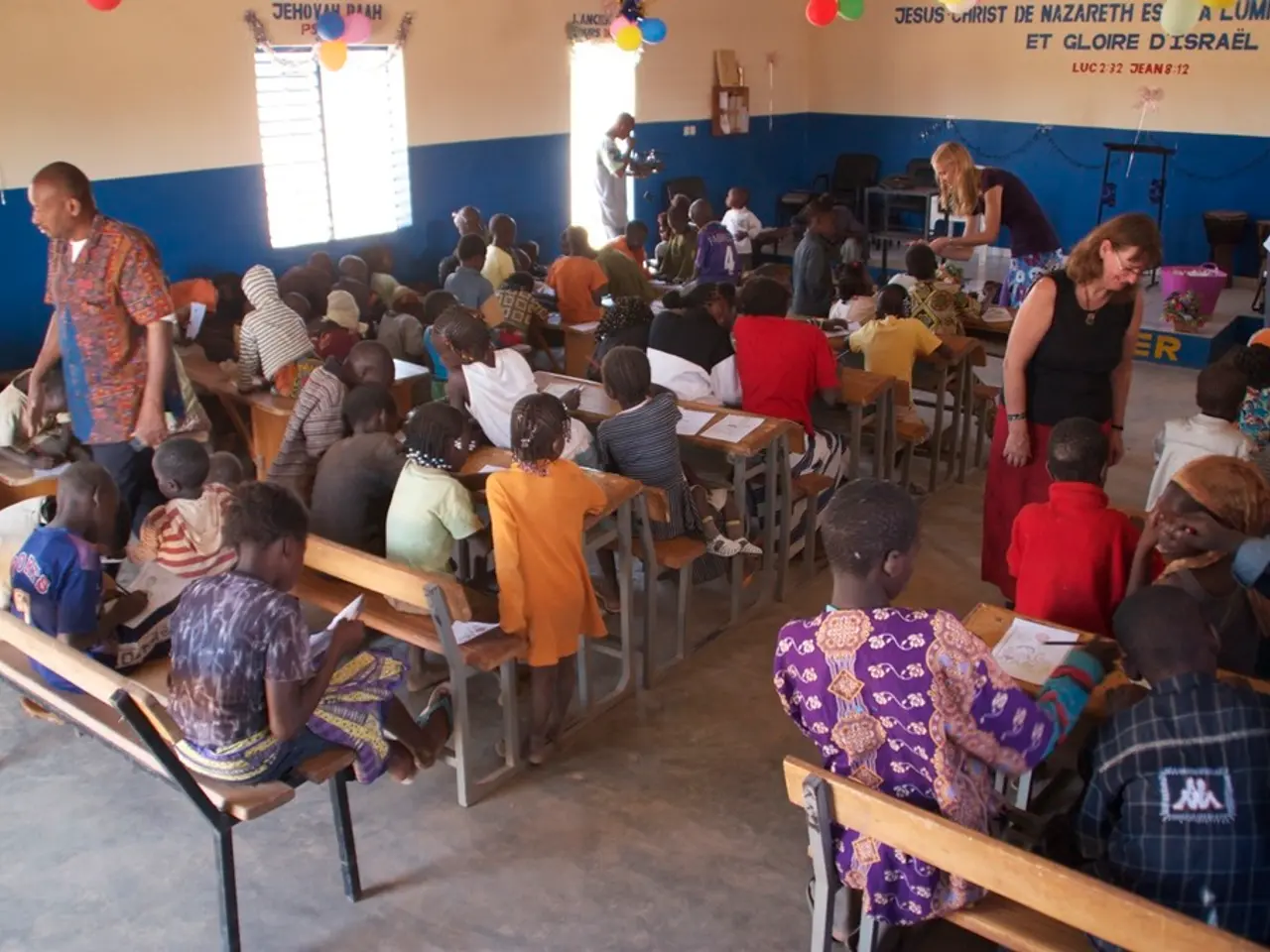Transforming climate threats into financial advantages for growing nations
In the global fight against climate change, developing countries are increasingly recognising the importance of governance-led climate action. This shift is particularly evident in initiatives such as India's Jharia Master Plan, a comprehensive programme aimed at addressing coalfield rehabilitation and urban transformation challenges in an active coal mining region.
Recently, the Jharia Master Plan, funded through public expenditure and led by national and state institutions, was approved by India's cabinet for approximately £511m ($692m). The plan includes social infrastructure, resettlement, skills development, and land-use management, with the potential to reduce fugitive emissions and reshape spatial governance.
To better accommodate governance-led climate action in developing countries, several key improvements are being proposed. Firstly, enhancing institutional coordination and capacity is crucial. Many climate-vulnerable developing countries face bottlenecks due to limited capacity and complex funding requirements. By establishing or strengthening coordination mechanisms among government entities, proposal development and management of multilateral funds can be streamlined, improving the implementation of initiatives like the Jharia Master Plan.
Secondly, aligning climate finance with national plans is essential. Climate finance needs to support the implementation of updated NDCs (Nationally Determined Contributions) and NAPs (National Adaptation Plans), which frame country-specific climate action pathways. The UNFCCC Standing Committee on Finance emphasises that supporting such national plans requires coordinated financing strategies that combine concessional resources with domestic and private investment.
Lastly, improving access to multilateral climate funds is vital. Developing countries increasingly engage with funds like the Adaptation Fund, Global Environment Facility, and Green Climate Fund. Reforms to ease accreditation, reduce administrative burdens, and provide technical support can enable governments to better channel funds into comprehensive, governance-led projects, including local master plans like Jharia.
However, less than 20% of total climate finance reaches low- and lower-middle-income countries, despite their acute exposure to climate risk. Moreover, the Jharia Master Plan's climate impact remains invisible in formal reporting, preventing it from accessing carbon markets and performance-linked finance.
Elsewhere, countries such as South Africa, Colombia, and Mexico have introduced carbon pricing and environmental fiscal reforms that are now embedded within their national revenue systems. In Kenya, over 326,000 farmers supported through public initiatives have adopted improved agricultural practices, leading to an average 41% increase in yields across key value chains.
The prevailing climate finance discourse continues to frame developing countries in terms of what they lack - capital, technology, and regulatory capacity - rather than recognising the systems they are building in response to their own priorities. It is crucial to shift this narrative and recognise the potential of initiatives like the Jharia Master Plan in driving sustainable development and climate action.
Udaibir Das, a Visiting Professor at the National Council of Applied Economic Research, Senior Non-Resident Adviser at the Bank of England, Senior Adviser of the International Forum for Sovereign Wealth Funds, and Distinguished Fellow at the Observer Research Foundation America, is among those advocating for this shift.
In Rwanda, a green bond issued by Prime Energy Plc in 2023 raised £5.5m on the Rwanda Stock Exchange for climate-aligned infrastructure. These examples demonstrate the potential for climate finance to support sustainable development in developing countries, provided that the right structures and strategies are in place.
References:
[1] NDC Partnership (2025). Institutional Capacity Building for Climate Action. Retrieved from https://ndcpartnership.org/our-work/institutional-capacity-building/
[3] UNFCCC Standing Committee on Finance (2022). Supporting National Climate Strategies. Retrieved from https://unfccc.int/process-and-meetings/the-convention/the-subsidiary-bodies/the-standing-committee-on-finance/items/12348.php
- The need for improved institutional coordination and capacity is crucial in accommodating governance-led climate action in developing countries.
- Climate-vulnerable developing countries often face bottlenecks due to limited capacity and complex funding requirements.
- By establishing or strengthening coordination mechanisms among government entities, the implementation of initiatives like the Jharia Master Plan can be improved.
- Aligning climate finance with national plans is essential to support the implementation of updated NDCs and NAPs in developing countries.
- The UNFCCC Standing Committee on Finance emphasises that supporting national plans requires coordinated financing strategies that combine concessional resources with domestic and private investment.
- Improving access to multilateral climate funds is vital for enabling developing countries to better channel funds into comprehensive, governance-led projects.
- Reforms to ease accreditation, reduce administrative burdens, and provide technical support can enable governments to access climate funds more effectively.
- Despite their acute exposure to climate risk, less than 20% of total climate finance reaches low- and lower-middle-income countries.
- The climate impact of initiatives like the Jharia Master Plan remains invisible in formal reporting, preventing it from accessing carbon markets and performance-linked finance.
- Examples from countries like Rwanda, South Africa, Colombia, Mexico, and Kenya demonstrate the potential for climate finance to support sustainable development in developing nations with the right structures and strategies in place.
- Advocates like Udaibir Das are calling for a shift in the climate finance narrative to recognize the potential of initiatives like the Jharia Master Plan in driving sustainable development and climate action.




